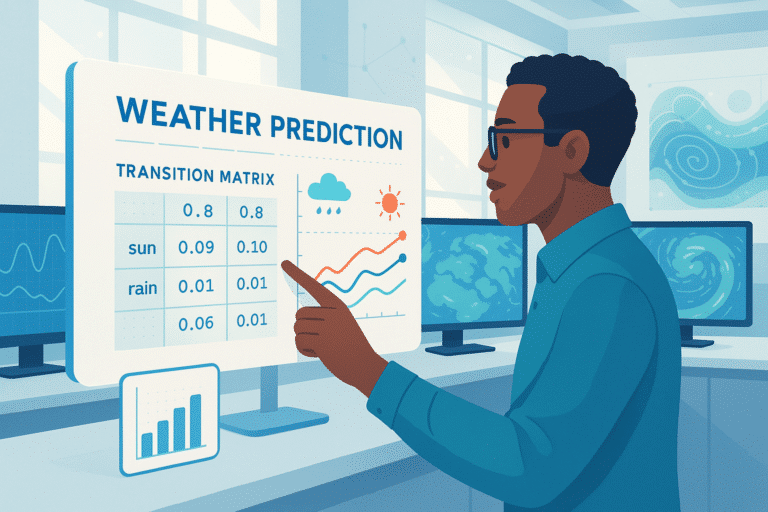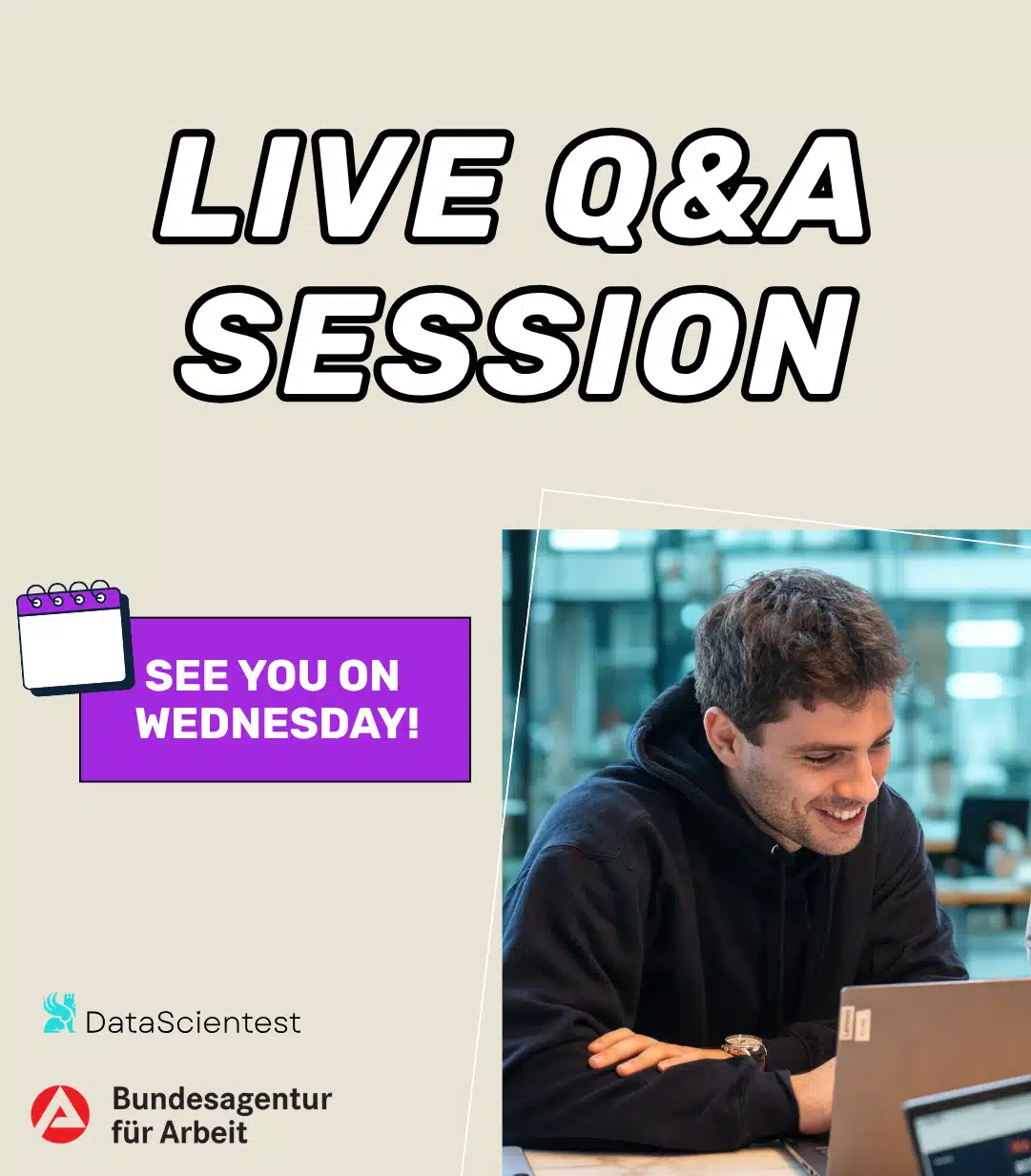Power BI AI Insights are the artificial intelligence features built into Microsoft’s analytics tool. These AI modules, which include predictive analytics, automated analysis, and natural language processing, can enhance your dashboards with intelligent data interpretation. Discover how to leverage them!
Making data speak is one thing, but with AI and the AI Insights integrated into Power BI, you can now enable data to speak for themselves! In an era where data volumes are exploding and decision-making timelines are shrinking, simply visualizing trends is no longer sufficient. One needs to understand the causes, detect weak signals, and anticipate trends.
Artificial intelligence in Power BI is not just a novelty; it is deeply integrated. With automated analyses, predictive models, natural language processing, summary generation, and anomaly detection, Power BI is now capable of not only showing what has happened, but also explaining why, suggesting what might happen, and even recommending actions!
Whether you’re a data analyst, data engineer, or business decision-maker, AI in Power BI allows you to achieve greater clarity, responsiveness, and relevance. And all this is possible without having to code a single algorithm. But how do you harness its full potential?
Why Inject AI into Your Power BI Reports?
Traditional dashboards have limitations. They can describe and illustrate, but they do not explain. A declining curve, a soaring value, or a KPI that goes off track rarely lends itself to an obvious reading.
Everything changed with the advent of artificial intelligence. This technology adds an automated, contextualized analysis layer to the data you visualize in Power BI. By embedding AI directly into its reports, Power BI enables the transformation of historical data into decision-making levers.
Rather than merely viewing numbers, you query a system that helps you interpret them. And this is done without leaving the Power BI environment or needing to train teams in Data Science. Another benefit: AI in Power BI is designed to be actionable. An insight is not merely a statistical fact; it is a trigger.
It can signal an adjustment in strategy, prompt an alert, or generate a simulation scenario. In essence, it helps move closer to prescriptive analysis.

An Overview of Native AI Features in Power BI
Power BI offers several ready-to-use artificial intelligence modules directly integrated into the interface, requiring no code. The “Key Influencers” visual analysis identifies variables that most affect a targeted value.
For example: “What factors most influence customer subscription renewals?” The tool automatically calculates correlations, ranks the variables, and presents them visually. Moreover, on any time series curve, Power BI can highlight points identified as anomalies, with automated explanations.
This facilitates swift identification of behavioral deviations, errors, or unforeseen events. You can also interact with reports using natural language by asking questions like “What is the revenue by region this quarter?”.
Power BI translates the query into DAX or SQL, and generates the corresponding visualization automatically. For Power BI Premium or Fabric users, AI advances even further with the creation of automated machine learning models via AutoML.
You select a target variable (e.g., churn rate), and Power BI trains a predictive model in the background, directly from the Power BI Service interface. For more advanced projects, Power BI can connect to models deployed in Azure Machine Learning. This allows you to integrate predictions or scores directly into reports, without inconsistencies between tools!
AI Insights in Power Query
Even before displaying any data in a report, Power Query plays a pivotal role: this is where data is prepared, transformed, cleaned, and enriched. It is also where AI Insights take on additional significance. Through the integration of Azure Cognitive Services, Power Query (in Power BI Service or Power Platform Dataflows) offers ready-to-use AI functions that can be activated with a few clicks.
Sentiment analysis is ideal for extracting emotions from a customer review or a social media comment. It provides a positive/neutral/negative score that you can use like any other column.
Language detection is particularly useful for automatically sorting multilingual texts. With keyword extraction, Power Query isolates key concepts from text to facilitate categorization or thematic analysis.
Moreover, with named entity recognition, the tool identifies names of people, organizations, places, or dates within free text. These processes can be automated in your data flows and executed in the cloud. In other words, your data arrives already “augmented” in Power BI. The end user has nothing else to do: insights are integrated into the model.
For technically inclined profiles, it’s possible to go further with custom functions based on external APIs (such as GPT models or computer vision tools), allowing for truly customized scenarios.

Building an Enhanced Data Pipeline
The advantage of using AI Insights in Power BI is their seamless integration into the entire Power Platform ecosystem. This is no longer just about visualization. It’s a complete decision-making pipeline capable of capturing, analyzing, and acting.
By combining Power BI and Power Automate, you can initiate smart actions. Imagine AI detects a likely increase in customer churn. With Power Automate, you can trigger a scenario: sending automatic emails, creating a ticket in a CRM, or even alerting a sales team. The insight becomes a trigger.
Power Apps allows these insights to be displayed in a business app. Scores from a predictive model can be shown directly in a low-code app built with the tool. For example, a salesperson can see a customer’s churn risk, a product suggestion, or an engagement score during contact.
Furthermore, data enriched in Power Query can transit through Dataverse, the common database of the Power Platform and be cross-referenced with other sources. ML models can be hosted in Azure ML or called from Azure Functions. This allows for building an advanced analysis chain: ingestion, processing, enrichment, decision.
Thus, Dataverse and Azure form a cohesive AI architecture. It is this smooth orchestration between Power BI, Power Query, Power Automate, Power Apps, and Azure that makes AI Insights so powerful. Intelligence extends beyond the dashboard and permeates every data touchpoint.
When Analysis Becomes Proactive and Intelligent
Power BI’s AI Insights facilitate the shift from information to automated intuition. It’s not just about Data Visualization anymore but assisted decision-making. By integrating predictive models, intelligent analyses, and cognitive services, Power BI becomes a genuine analytical assistant capable of reading between the lines of your data and suggesting subsequent actions.
However, knowing how to capitalize on this intelligence is crucial: asking the right questions, verifying answers, and empowering teams to retain control over interpretation.

If you aim to fully master the AI features of Power BI and build smart data pipelines with Power Query, Power Automate, and Azure, DataScientest training is for you!
Our Data Analyst course trains you in all stages of data processing: modeling, visualization, automation, and introduction to decision-making AI. You will learn how to best utilize Power BI, create dynamic reports, and implement AutoML models to enrich your analyses!
We also offer certification training specifically dedicated to Microsoft solutions like Power BI or Microsoft Azure cloud. With our practice-oriented teaching, you will develop concrete skills to integrate AI into your data projects.
Our training courses are available in intensive BootCamp, continuing education, or work-study, and are eligible for CPF or France Travail funding. Discover DataScientest and add intelligence to your data with artificial intelligence!
For more insights on this topic, check out our comprehensive article dedicated to Power BI and our article focused on the Power Platform!










